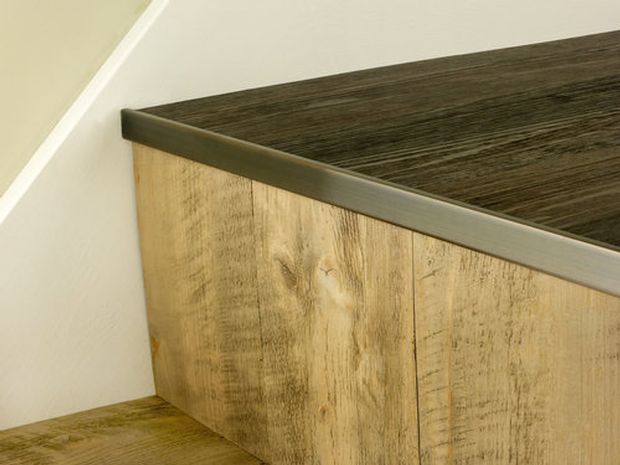Stair Riser Height Regulations Explained

Stair riser height regulations are there to ensure staircase safety. Risers act as the back pieces of the steps and are important to get right if you are designing or redecorating a staircase.
The riser is the vertical section that connects one step to another. The stair tread is the horizontal strip that is stepped on.
This guide has all you need to know about interior stair riser height requirements and how to follow them.
Stair Riser Height Measurements
These are the general measurements set by UK Building Regulations Approved Document K, 2013 edition. It’s important to familiarise yourself with this document if you’re designing a staircase.
Average Height of a Stair Riser
The typical stair riser height is 200mm. This is considered the ideal height for stair risers as it yields the most comfortable step while also conforming to safety standards.
Generally, the average total rise of staircases is 2,600mm. This divides into 13 risers at 200mm.
Maximum Riser Height for Stairs
The max stair riser height is 300mm. Any higher than this is considered too great a climb.
Minimum Stair Riser Height
The minimum height for stair risers is 190mm.
It is crucial that every riser of your stair is the same height. For example, if one step has a riser height of 200mm, the next riser cannot be 250mm. Having uneven risers can result in serious trip hazards.
The exception to that rule is when a flat landing breaks up the staircase. Different riser heights can sometimes be used here but not at a greater difference than 70mm.
Other Safety Considerations for Stair Risers
Your staircase should not have a pitch of over 42°. The pitch refers to the overall steepness of the staircase.
In buildings where there are consecutive flights of stairs that include over 36 risers, there should be a change of direction between the flights. The angle for change of direction should be a minimum of 30°.
In buildings which are not dwellings, the following regulations should be followed:
- Flights between landings on utility stairs should have a maximum of 16 risers
- Flights between landings on stairs which are used for general access should have 12 risers at a maximum. This can go up to 16 risers where plan areas are restricted as is sometimes the case for small premises.
Are Closed Risers or Open Risers Better?
Closed risers have additional safety benefits that open risers do not have. An open riser can come with the risk of falls because the foot, or a walking aid, could potentially get caught underneath the next tread while ascending. Having a closed riser prevents this, as well as giving a greater comfort in its appearance with no open spaces visible.
How to Ensure Staircase Safety With Open Risers
If you are designing a staircase for a commercial building, the best thing to do is to ensure risers are included in the design. However, you may prefer the aesthetic that comes with an open staircase. If this is the case, there are regulations about construction that you need to follow:
- Tread overhang: Each tread in the staircase must have an overhang of at least 16mm, ensuring that the gaps are harder to fit through
- Tread gap: Ensure that the gap between each tread is no wider than 100mm
- Consider a riser bar: This is a bar that can be installed in between each tread, having the effect of guarding against access from young children while keeping the open design
Make sure you take all the necessary precautions for childproofing your stairs.
Secure the Finishing Touches for Your Staircase With Our Accessories
If you’re designing a staircase or redecorating it, following regulations is important for safety. Sometimes, making a staircase safer is as simple as updating it. At Stair Rods Direct, we have everything you need to give a fresh look to your stairs that meets all regulations.
Whether you’re looking for stair riser design ideas or looking for a way to cover your risers with a beautifully-made stair carpet runner, we’ve got you covered. Not only do our products guarantee quality and long life, but they also look good. With countless finishes to choose from and a variety of designs, you can make your staircases safe and aesthetically pleasing.


